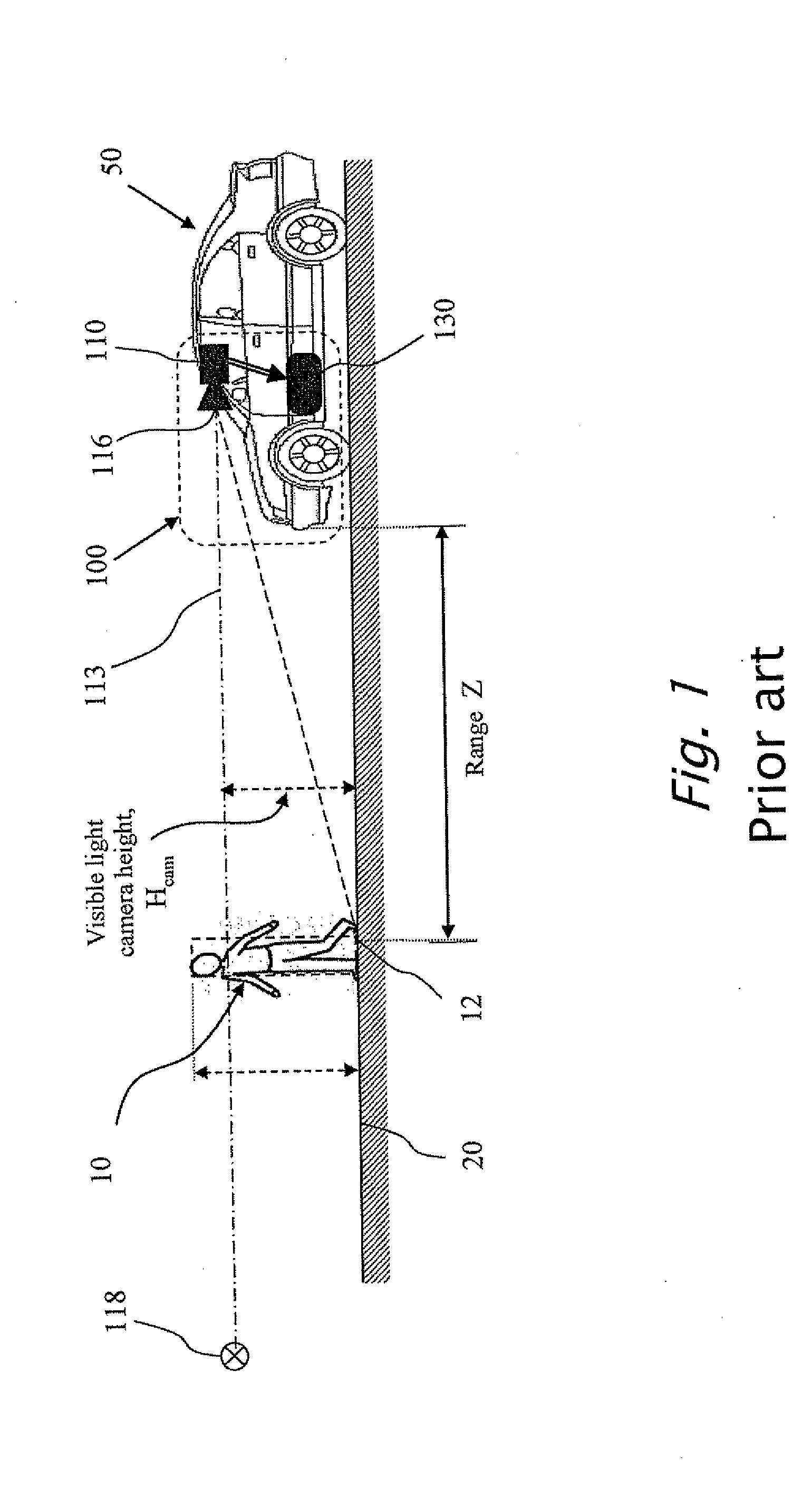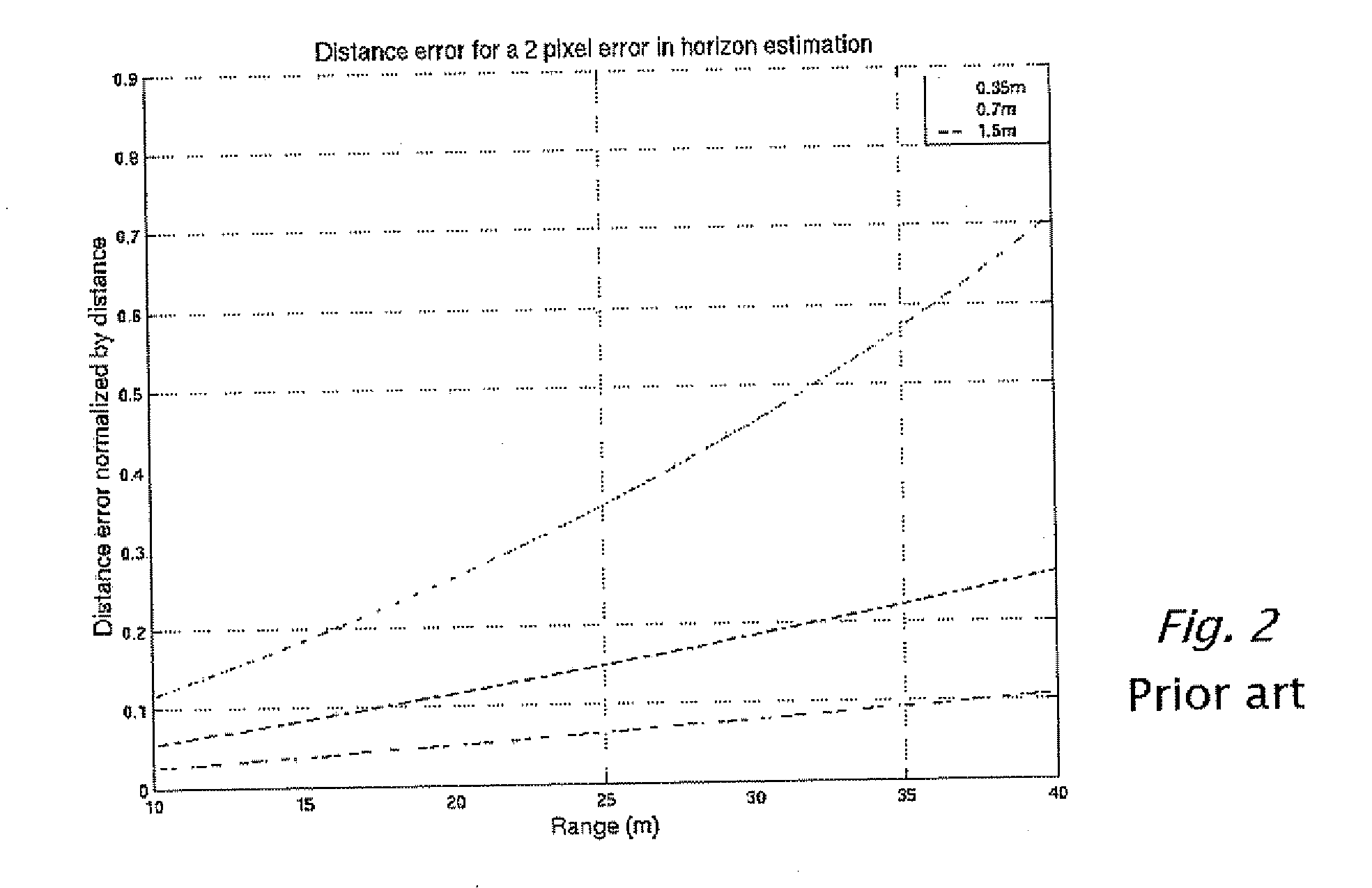Fusion of far infrared and visible images in enhanced obstacle detection in automotive applications
a technology of visible and far infrared images, applied in image enhancement, scene recognition, instruments, etc., can solve the problems of low cost automotive qualified sensors sensitivity, loss of life and property, and inability to meet the needs of vehicles, and achieve the effect of improving the confidence of distance measured
- Summary
- Abstract
- Description
- Claims
- Application Information
AI Technical Summary
Benefits of technology
Problems solved by technology
Method used
Image
Examples
second embodiment
[0120]FIG. 9 is flow diagram which illustrates a recursive algorithm 300 for refining distance measurements, in accordance with embodiments of the present invention. In the present invention, in step 320, an obstacle such as a vehicle is detected in the VIS image, acquired in step 312. A distance D to selected points of detected pedestrian 10 is computed in step 330 and then, a corresponding vehicle is then detected in the FIR image, acquired in step 310. In step 340, the rectangle representing pedestrian 10 in the VIS image is projected onto a location in the VIS image. In the next step 350, features between the detected targets in the two images are aligned and matched. During the daytime, the FIR image of the vehicle is searched for the bright spots corresponding to the target vehicle wheels and the exhaust pipe. In the visible light image, the tires appear as dark rectangles extending down at the two sides of the vehicle. The bumper is typically the lowest horizontal line in the...
third embodiment
[0124]FIG. 10 is flow diagram which illustrates a recursive algorithm 400 for tracking based on both FIR and VIS images acquired in respective step 410 and 412, in accordance with embodiments of the present invention. In the present invention, a pedestrian 10 is detected in step 420, in the FIR image, an accurate range l can be determined in step 430, and matched to a patch in the VIS image (as described above) in step 442. In step 280, the pedestrian 10 is tracked in each camera separately using standard SSD tracking techniques and the match is maintained. As the pedestrian 10 leaves FIR camera 120 FOV as determined in step 270, the tracking is maintained by VIS camera 110 in step 290. Since the absolute distance was determined while still in FIR camera 120 FOV, relative changes in the distance, which can be obtained from tracking, is sufficient to maintain accurate range estimates. The pedestrian 10 can then be tracked all the way till impact and appropriate active safety measures...
fourth embodiment
[0126]In the present invention, a vehicle target, whose distance has been roughly determined from VIS camera 110, is matched to a patch in the FIR image. The patch is then aligned. The aligned patch in the FIR image is then searched for the telltale features of a vehicle such as the hot tires and exhaust. If features are found the vehicle target is approved and appropriate action can be performed sooner, in step 262.
PUM
 Login to View More
Login to View More Abstract
Description
Claims
Application Information
 Login to View More
Login to View More - R&D
- Intellectual Property
- Life Sciences
- Materials
- Tech Scout
- Unparalleled Data Quality
- Higher Quality Content
- 60% Fewer Hallucinations
Browse by: Latest US Patents, China's latest patents, Technical Efficacy Thesaurus, Application Domain, Technology Topic, Popular Technical Reports.
© 2025 PatSnap. All rights reserved.Legal|Privacy policy|Modern Slavery Act Transparency Statement|Sitemap|About US| Contact US: help@patsnap.com



